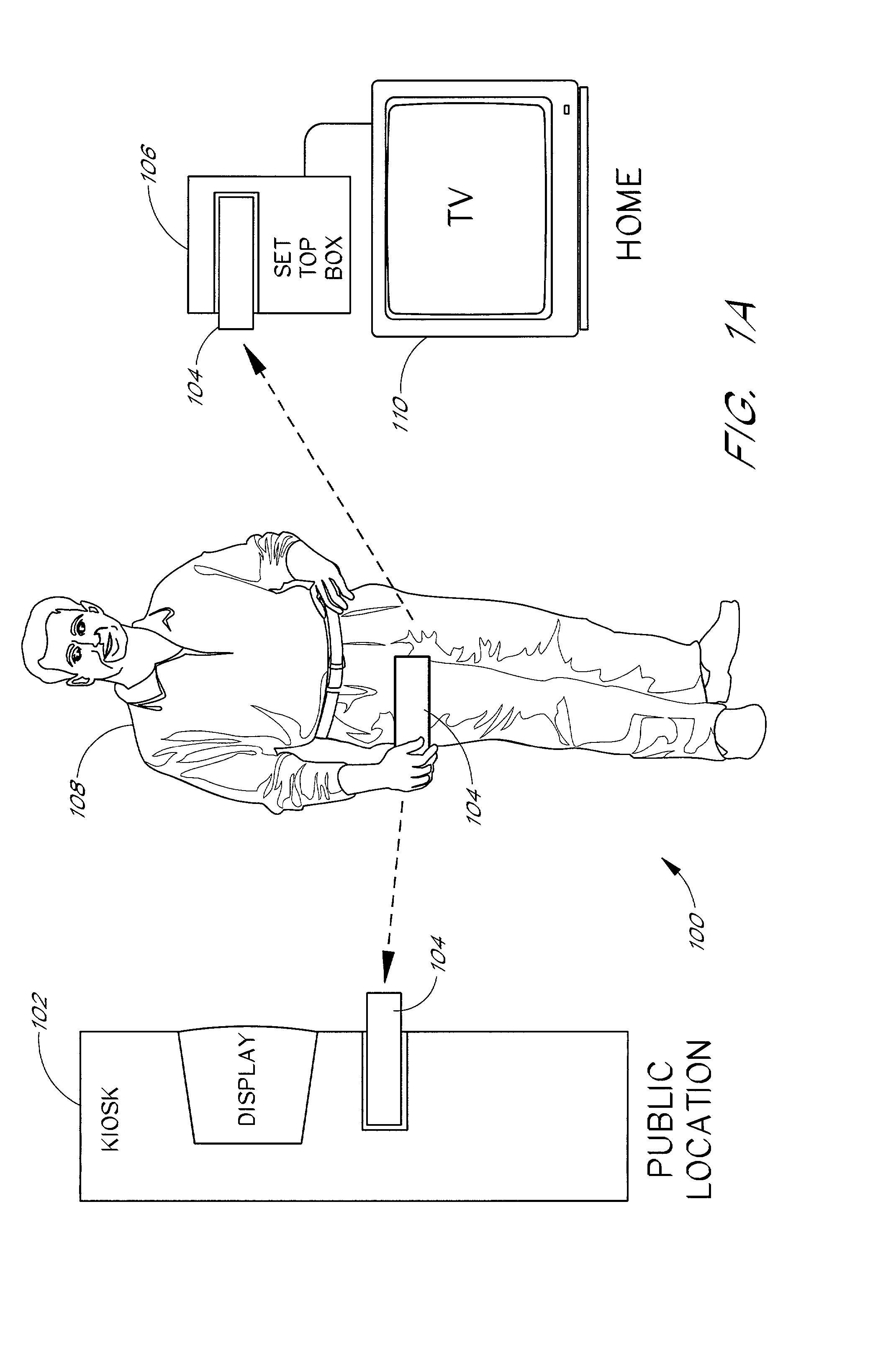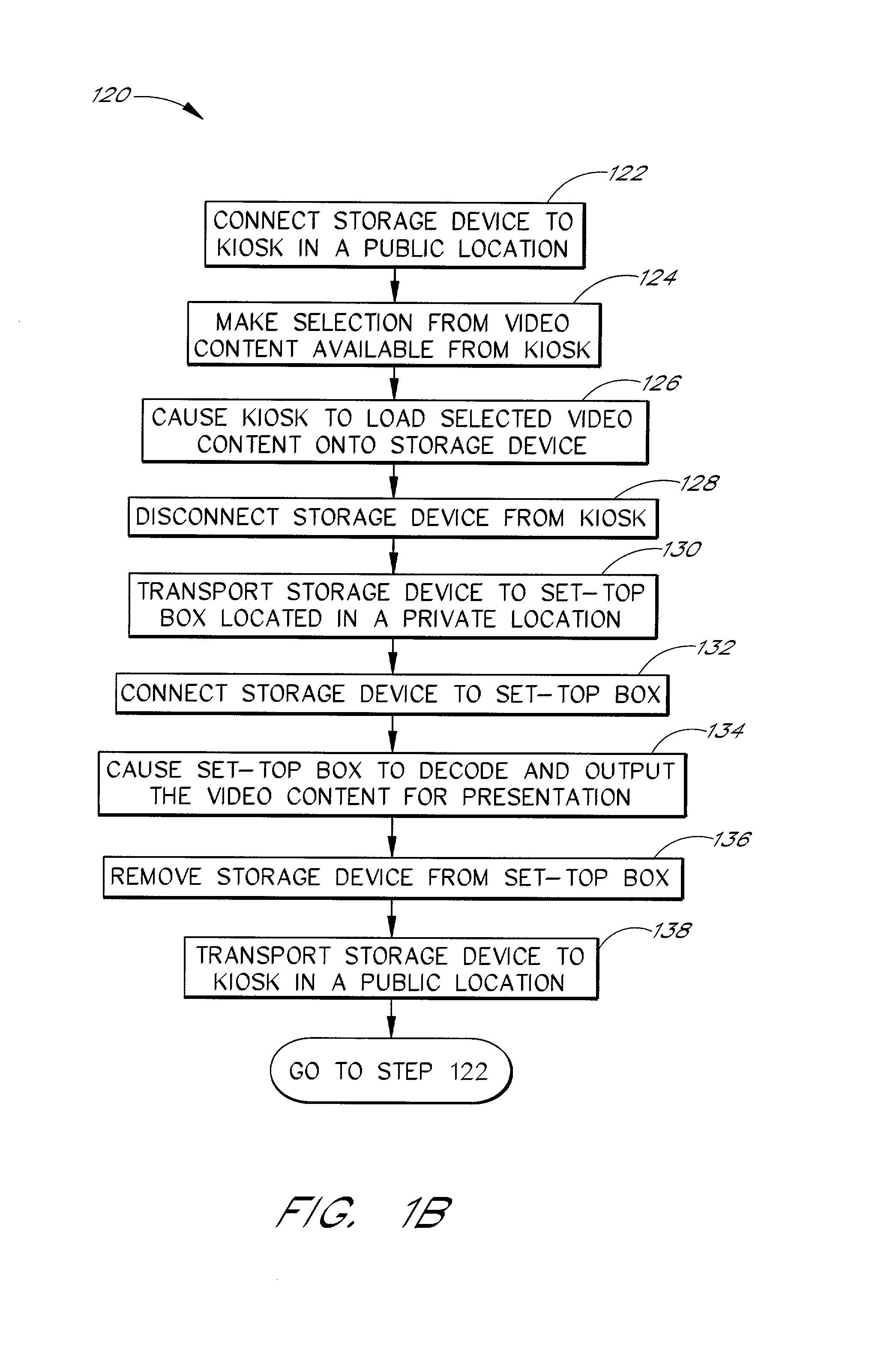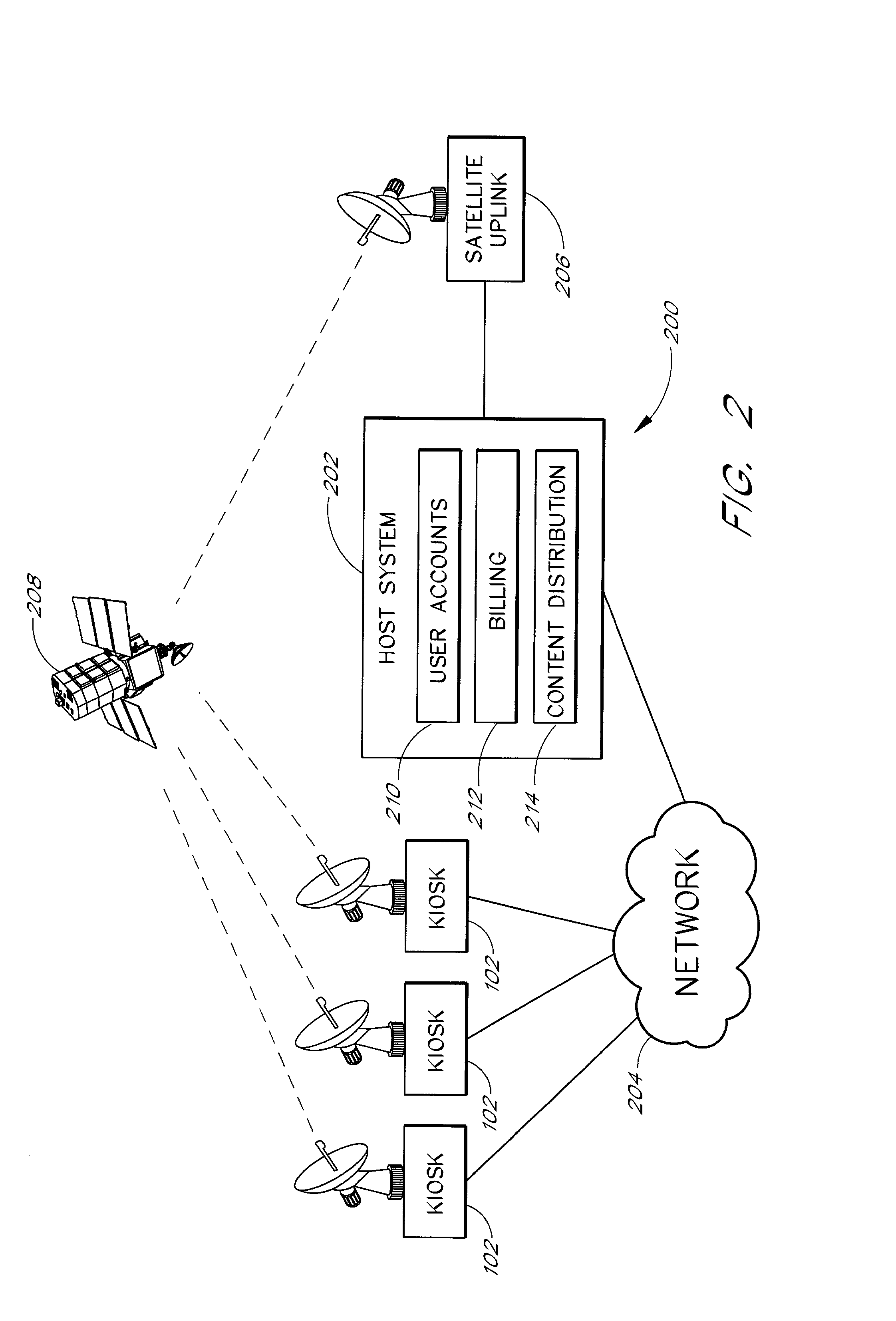Video content distribution system including an interactive kiosk, a portable content storage device, and a set-top box
a video content and distribution system technology, applied in the field of video content distribution systems, can solve the problems of inability to control the content use, inconvenient recording and playback, and inability to record and playback,
- Summary
- Abstract
- Description
- Claims
- Application Information
AI Technical Summary
Problems solved by technology
Method used
Image
Examples
embodiment 360
[0085] FIG. 3D illustrates a second alternative embodiment 360 of the storage device 104 in conjunction with the kiosk 102 or the set-top box 106. The storage device 360 in the second alternative embodiment is a removable media unit 362, preferably including a passive storage medium (e.g., magnetic or optical media that does not include any active componentry / circuits). The removable media unit 362 may be a removable magnetic or optical disk or cartridge, such as a CD-RW disc. The removable media unit 362 is accessed by a removable media drive 364 that is located in either the kiosk 102 or the set-top box 106. The removable media unit 362 is preferably a rewritable unit (data can be erased and rewritten as on a disk drive). Alternatively, the removable media unit 362 may be a write-once unit (data can be written, but not erased as on recordable CDs).
[0086] Like the first alternative embodiment of the storage device 350, the second alternative embodiment 360 preferably does not incor...
embodiment 600
[0135] FIG. 6 illustrates a preferred embodiment 600 of the set-top box 106 (FIG. 1A). The set-top box 600 includes a housing 602 and is preferably configured to be located in a user's home and to output a signal to a television set 110 (FIG. 1A) or other video display unit. The set-top box 600 may also be configured to operate in conjunction with and output a signal to a personal computer.
[0136] The set-top box 600 includes and is controlled by a computer system 604. The computer system 604 preferably includes a processor 606, a system memory 608, a nonvolatile memory 610, and an EPROM or ROM 611, all of which are interconnected by a system bus 612. The processor 606, which may be a general purpose microprocessor or a microcontroller, preferably executes system code which is stored in the EPROM 611. The nonvolatile memory 610 is preferably used instead of a hard disk to store data while the set-top box 600 is turned off between operating sessions. The computer system 604 is prefera...
first embodiment
[0148] FIG. 7A illustrates the content use data 307. A data structure 700 has a header 702 identifying the content unit (#1234567) for which the data structure 700 stores use information. The header 702 is preferably followed by several data elements 704, which are shown one per line. Each data element 704 indicates the number of times a particular segment of the content unit 303 has been presented. In order to determine when a segment of a content unit 303 has been presented, a marker can be incorporated into the content unit 303, which, when processed, indicates that the associated segment has been presented. A content unit can be divided into one, two, four, or more segments. As more segments are used, more content use data 307 can be collected. The marker is preferably stored near or at the beginning of each segment. The use of segments as a rubric for determining the use of a content unit 303 is conveniently compact, yet provides a fair method of determining charges for use. By...
PUM
 Login to View More
Login to View More Abstract
Description
Claims
Application Information
 Login to View More
Login to View More - R&D
- Intellectual Property
- Life Sciences
- Materials
- Tech Scout
- Unparalleled Data Quality
- Higher Quality Content
- 60% Fewer Hallucinations
Browse by: Latest US Patents, China's latest patents, Technical Efficacy Thesaurus, Application Domain, Technology Topic, Popular Technical Reports.
© 2025 PatSnap. All rights reserved.Legal|Privacy policy|Modern Slavery Act Transparency Statement|Sitemap|About US| Contact US: help@patsnap.com



